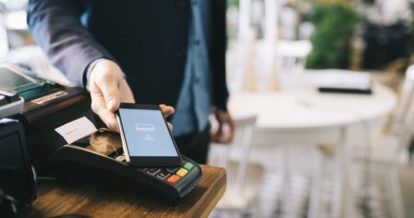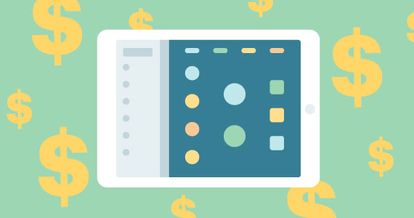Months into the COVID-19 pandemic, it’s overwhelmingly clear that no restaurant will come out of this unscathed. With the restaurant industry expected to lose up to $240 billion by the end of 2020, many restaurateurs will discover that their old business model just doesn’t work in a COVID-19 world.
As bleak as that all sounds, restaurateurs have always found ways to innovate and evolve in times of chaos. Whether it’s a natural disaster or a major financial recession, disruption has always been a catalyst for positive change. This time around, it’s clear that many of these changes will be driven by the latest restaurant technology.
Though some of this restaurant tech has been around for years, the industry has been slow to fully embrace digital innovations. Now, COVID-19 has radically changed consumer behavior and restaurants have no choice but to adopt technology that improves safety and economic viability.
Whether it’s contactless payments, reservations software, or even robotic assistants, restaurant technology is a crucial part of restaurant recovery. And for the restaurants that adopt this kind of technology early on, the path forward will be all the more smooth.
To help you navigate this new world of restaurant technology and the role it will play in the wake of COVID-19, we’ve created a comprehensive guide.
In this guide, we’ll cover:
- The major hurdles for restaurants as they reopen
- The benefits of modern restaurant POS systems
- Other restaurant technology that can help your business adapt and evolve
Though the situation will look a little bit different across the country, virtually every restaurateur will need some form of restaurant technology to adapt to our new normal.
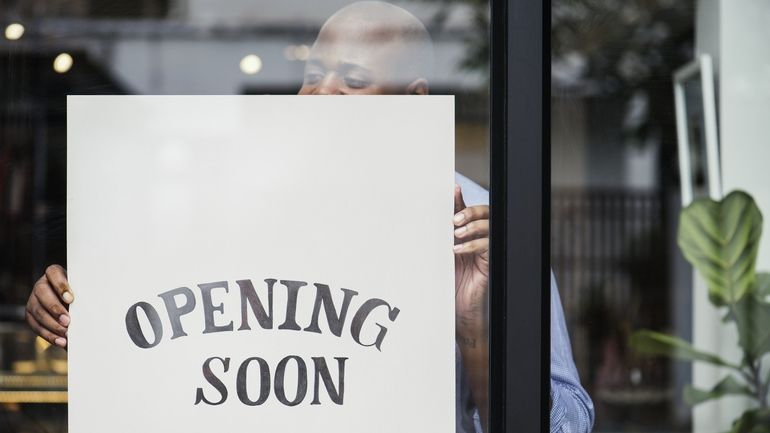
The Three Biggest Hurdles for Restaurants
Though there are still a lot of unknowns, the future of dining out is becoming more clear as restaurants here and abroad begin reopening their doors. Based on these early reopenings it seems that there are three major hurdles facing restaurateurs.
1) Health & Safety
The most obvious hurdle is reducing the spread of the novel coronavirus. Though restaurants have always prioritized food safety and cleanliness, this is more important than ever before in order to keep the public and staff safe. These extra safety precautions will mean lengthier delivery times and slower speed of service than restaurants are used to. But in the wake of COVID-19, safety and hygiene will trump speed and efficiency.
2) Government Rules & Regulations
In every country that has begun to reopen its economy, government rules and regulations have posed major challenges for restaurant reopenings. For instance, physical distancing rules and capacity limits mean that many restaurants need to completely reconfigure their spaces, changing the dine-in experience entirely. Not to mention, more stringent measures such as contact tracing will mean asking diners to give up some of their privacy in order to visit your restaurant.
3) Consumer Confidence
While restaurateurs can control how they respond to safety concerns and government regulations, there is one hurdle that’s largely out of their hands: consumer confidence. Though some diners will be eager to return to restaurants, others will be much more cautious – even when it comes to takeout and delivery.
Restaurants now face intense public scrutiny and will need to respond quickly to any concerns about the safety of their operations. This will be especially challenging due to social media and third-party review sites such as Yelp.
Restaurant Technology for a COVID-19 World
The best way for restaurants to overcome these hurdles is to leverage new restaurant technology. In fact, we’ve already seen how online ordering helped many restaurants remain open for takeout in the early days of the pandemic.
As we continue to navigate COVID-19, additional restaurant technology can provide solutions for the challenges ahead.
POS Systems
The point of sale, or POS system, is one of the most common pieces of restaurant technology and functions as the central hub of any restaurant. This restaurant tech is not exactly new, but many venues still rely on outdated legacy POS systems, instead of the newer cloud-based systems that run on iPads and tablets.
A year ago, having a cloud-based POS might have been mainly a competitive advantage. But as restaurants begin reopening, a cloud POS is key to navigating the challenges ahead. This is because cloud POS systems are uniquely equipped with some of the most cutting-edge features, including:
Table Management
Between capacity limits and social distancing, it’s more than likely that you’ll need to make some changes to your restaurant floor plan. This not only means rearranging tables, but also adjusting bar seating, entrances and exits, host stands, hand-sanitizing stations, and more.
Modern restaurant POS systems are equipped with floor plan and table management software that can be used to keep track of these ongoing changes. The software can also help staff move parties and manage sections throughout service
Tableside Ordering
No matter what your new floor plan looks like, you’ll still have to think about social distancing and how to manage the movement of diners both inside and outside of your restaurant.
Perhaps the biggest advantage of modern POS systems is that they’re mobile. This means that each server can carry a tablet loaded with the POS software, reducing the spread of germs that come from sharing touchscreen devices among staff. Servers can then use their mobile tablets to take orders tableside or while customers are waiting in line, reducing the number of people moving around the restaurant. This not only helps customers keep a safe distance apart, but it also makes the ordering process faster and more accurate.
Menu Management
Many of the restaurants that pivoted to takeout and delivery early on have been forced to make adjustments to their regular menu offerings. Even for restaurants that are waiting until dine-in restrictions are lifted, supplier shortages or a reduced need for certain ingredients may mean some major menu changes.
Cloud POS systems include menu management software that helps you manage all your current offerings in one place. This means you can make changes on the fly based on inventory levels, available staff, and more. It also provides an easy way to manage multiple menus if you’re offering specialty items, such as meal kits or groceries.
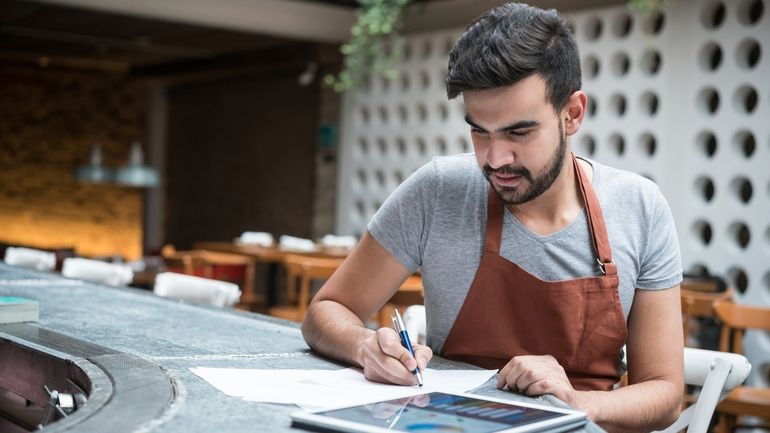
Inventory Management
With fewer orders coming in, most restaurants have cleared out or significantly reduced their inventory. In some cases, they’re no longer able to buy in bulk and are forced to purchase ingredients from local retailers at a premium cost.
As restaurants begin to reopen – whether that’s for takeout or dine-in – inventory levels will be highly unpredictable. Modern restaurant POS systems come with built-in food inventory management features that help you stay on top of inventory levels, determine ingredient-level food costs, and track the profit margins for each menu item. This can help you keep track of your inventory in real-time so you can purchase ingredients only as needed.
Reporting & Analytics
Before the pandemic, most restaurateurs could get by using spreadsheets to keep an eye on how their business was doing. But as diners slowly return, spreadsheets won’t provide a full picture of what’s working and what’s not working.
Perhaps one of the most powerful features of a modern POS is its reporting and analytics functions. As the restaurant industry undergoes major changes, data will be your best friend. Your POS can crunch the numbers for you and provide you with reports that give you up-to-date information about how your business is doing. This vital information can help you make decisions about your hours of operation, staffing levels, and even the profitability of each menu item.
Online Ordering
Beyond your POS system, online ordering is another piece of restaurant technology that you’ll need to adapt to changing customer demands. Online ordering allows customers to place an order for takeout or delivery directly through your restaurant’s website, your own app, or a third-party app. This can be done on mobile or on a desktop – no phone call required.
In the past few years, online ordering has become incredibly popular. In fact, TouchBistro’s 2020 State of Restaurants Report found that 85% of FSRs used at least one online ordering platform. But while customers love online ordering, many restaurateurs have been hesitant to heavily rely on online ordering due to the high cost of third-party apps, the nature of their menu items (do they travel well?), and other challenges.
While restaurants should take these into consideration, the fact of the matter is that online ordering has huge benefits for the post-COVID world – benefits that are impossible to ignore. With consumers wary of spending too much time outside or even leaving their homes at all, online ordering offers a way to enjoy a meal from their favorite restaurant in the safety of their own home. Data from April 2020 already shows that more Americans are ordering delivery during the pandemic, with the biggest increase among parents – a trend that is likely to continue even as dining restrictions are lifted.
While it might seem like consumers are the ones reaping the benefits of online ordering, the technology is also beneficial for restaurants. On the one hand, online orders mean fewer people physically visiting your venue, which reduces the risk of you, your staff, or other customers getting sick.
Additionally, online ordering can be a valuable way to keep revenue coming in when your dining room is partially or completely closed. In fact, industry experts predict that venues that invest in online ordering for takeout and delivery will return to profitability faster than those that rely heavily or entirely on on-premise dining. And while third-party apps charge notoriously high fees per order, in-house platforms such as TouchBistro Online Ordering allow customers to order directly from your website, so you can keep 100% of the profits.
Read about the full list of benefits here.
Reservations
While online ordering has obvious advantages, reservation software is an equally important piece of restaurant technology. Restaurant reservation software is a tool that allows guests to reserve a table in advance through your website, app, or a third-party platform.
In its 2020 State of Restaurants Report, TouchBistro found that while one-third of operators had plans to adopt restaurant reservation software in the future, 57% were still relying on phone calls and walk-ins to make bookings. Though these low-tech methods may have cut it in the past, the COVID-19 pandemic has made restaurant reservation software invaluable.
With strict limits on restaurant capacity, reservations have become a practical way to control the number of diners flowing through your restaurant. In fact, some states like Alaska and Minnesota have even made reservations mandatory for reopening.
Restaurant reservation software makes it easier to comply with these strict government regulations by allowing you to accept a limited number of bookings and stagger reservation times accordingly. This not only helps you control capacity, but it can also reduce the number of walk-ins waiting for a free table.
But beyond simply helping you manage bookings, one of the most valuable aspects of restaurant reservation software is that it gives you a direct line of communication with your guests. Whether it’s through an app, email, or text, reservations software allows you to ease diners’ anxieties by sending updates about the safety precautions you’re taking ahead of their visit.
This line of communication can also be valuable when it comes to contact tracing because it gives you a log of each diner who visited your restaurant and their contact information – something that’s now required in certain states and cities.
Contactless Payments
Not only has COVID-19 accelerated the need for reservations software, but also for contactless payment processing solutions.
Contactless payments are payments that don’t require any physical contact between the buyer’s card (or even a smartphone for mobile payments), and the payment terminal. This type of payment is made possible through debit cards, credit cards, or mobile wallets that use radio-frequency identification or near field communication to communicate with the payment reader – just think tap payments or Apple Pay.
Though contactless payments have existed for years, restaurants in North America have been slow to adopt the technology. This has largely been due to concerns about security and the cost of payment processing fees.
However, with the novel coronavirus’ primary transmission being human contact, contactless payment has an obvious advantage. Early studies have revealed that the virus causing COVID-19 can remain active on plastic and stainless steel surfaces for two to three days. So if customers are forced to handle cash or touch shared devices like pin pads and payment terminals, the virus can easily be passed from person to person.
Contactless payments help to mitigate this concern by reducing contact at the point of payment. Ideally, restaurants should be using wireless terminals equipped with contactless payment technology so that customers can pay at the counter for pickup or pay at the table when dining in. In fact, the CDC recommends the use of touchless payment solutions whenever possible.
Contactless payment in restaurants is no longer just about convenience. It’s about health and safety. Restaurateurs need to be prepared for this major shift in payments technology, especially since customers will demand it.
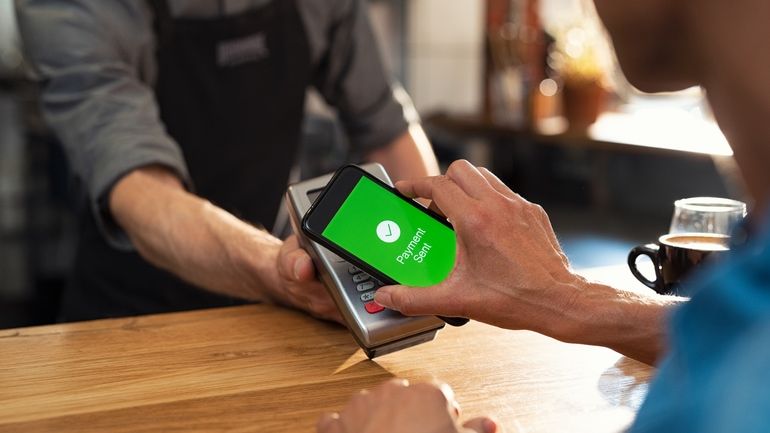
Loyalty Program Software
When it comes to restaurant technology for a COVID-19 world, contactless payments often go hand-in-hand with digital loyalty programs. This refers to the web or app-based platforms that encourage loyalty and long-term business by offering merchandise, coupons, and other rewards to your most-frequent customers.
Digital loyalty programs have been around for years and major chains such as Starbucks have been extremely successful in using them to turn casual customers into regulars. However, for smaller, independent restaurants, loyalty programs have often been less of a priority.
In the wake of COVID-19, restaurants can no longer afford to put loyalty on the backburner. In order to recover from the pandemic, restaurants will need to put more effort into providing a unique and customized dining experience, and this is where loyalty can come into play.
Loyalty programs give restaurants a seamless way to collect and store customer information so they can create promotions that attract, engage, and reward loyal diners. Unlike the stamp cards of the past, digital loyalty programs make it easier to reach consumers where they are, which is increasingly online. This is something Chipotle has done well during the pandemic, offering more digital content and rewards through its app-based loyalty program.
With 38% of consumers saying they plan to support local businesses more after the pandemic, a digital loyalty program is a great way for restaurants to turn new customers into devoted regulars.
Though most restaurant tech was originally designed to drive efficiency and convenience, it now has a far bigger role to play. In the wake of COVID-19, restaurant technology is helping operators shift their business models, but also helping to keep guests safe and healthy.
In short, we’ve reached a turning point where technology is no longer a competitive advantage, but necessary for the long-term survival of restaurants. Now is the time for operators to seriously consider restaurant technology they may have overlooked in the past in order to adapt and thrive in this new era of hospitality.
Sign up for our free weekly TouchBistro Newsletter

